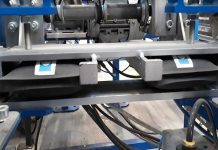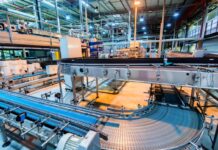
Australia’s manufacturing sector continued to expand in September, although at a slower pace, according to the latest S&P Global Australia Manufacturing Purchasing Managers’ Index (PMI) report.
The headline PMI fell from 53.0 in August to 51.4 in September, remaining above the 50.0 no-change threshold for a ninth consecutive month.
The report indicated that manufacturing conditions continued to improve, but only modestly compared to previous months.
S&P Global said that growth in production eased as new orders declined for the first time since June, with firms citing subdued market conditions.
It noted that export demand also weakened, with panellists reporting that tariffs imposed by the United States had dampened orders not only from US clients but also from other major trading partners.
“September’s Australia Manufacturing PMI data revealed that manufacturing production continued to expand at the end of the third quarter, though the pace of growth softened in the latest survey period,” said Jingyi Pan, Economics Associate Director at S&P Global Market Intelligence.
“Qualitative data showed that weaker market conditions and US tariffs negatively affected demand for goods in September.”
Despite softer demand, S&P Global said manufacturers continued to hire additional staff to manage existing workloads and reduce backlogs. The report found that employment rose for the seventh consecutive month, while purchasing activity and inventory levels also increased, albeit at a slower pace.
Firms reported that supply conditions continued to worsen, with lead times lengthening due to supply shortages, shipment delays and adverse weather. S&P Global noted that although vendor performance deterioration eased slightly since August, it remained significant.
According to S&P Global, supply pressures contributed to a rise in costs, with transport, raw material and fuel price increases pushing input cost inflation to a five-month high. Companies passed on some of these costs to customers through higher selling prices, though both input and output inflation rates remained below their long-run averages.
“In addition to demand softening, Australian goods producers were hit with rising cost pressures in September,” Pan said.
“Although still below the long-run average, cost inflation was sharp and greater than the pace at which selling prices were lifted. Altogether, this pointed to additional pressure on margins for manufacturers.”
S&P Global said business sentiment remained positive overall, with firms expressing optimism that new product launches and expansion plans could support growth over the next year.
However, the report noted that confidence eased to a three-month low amid concerns about the potential impact of trade tariffs on economic activity.



















